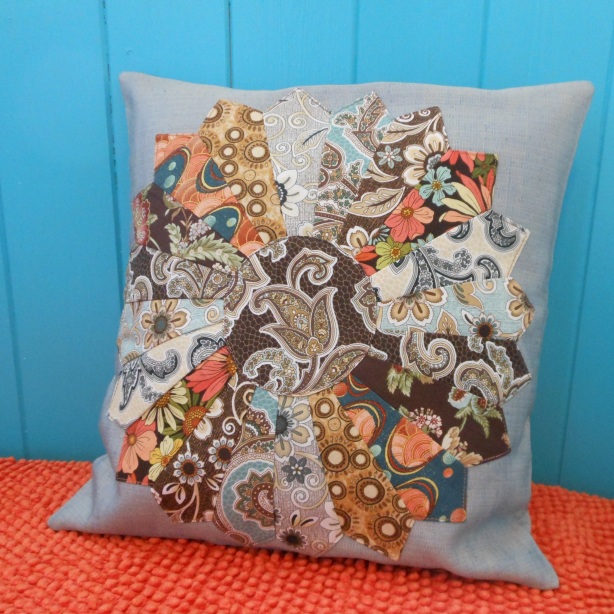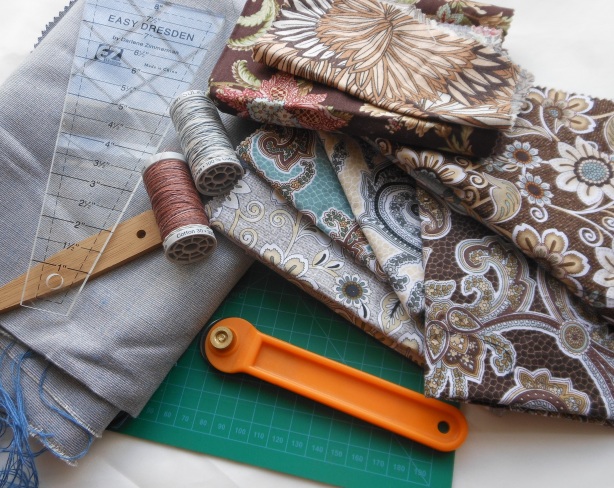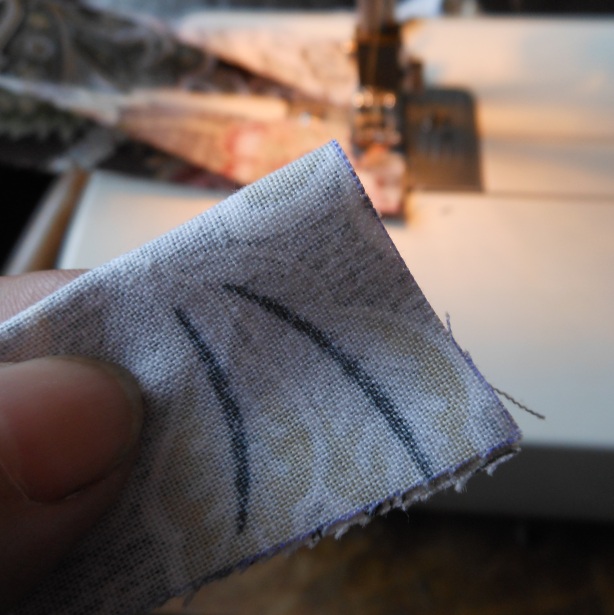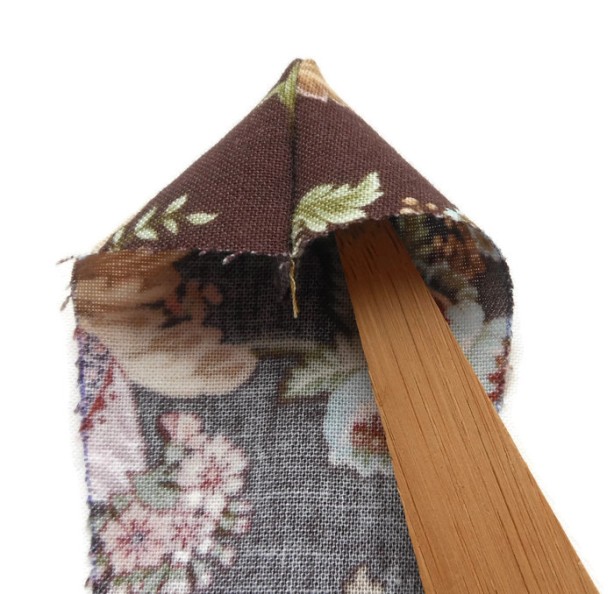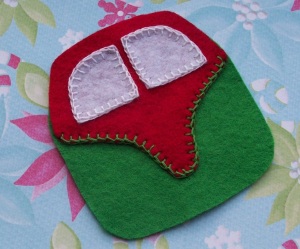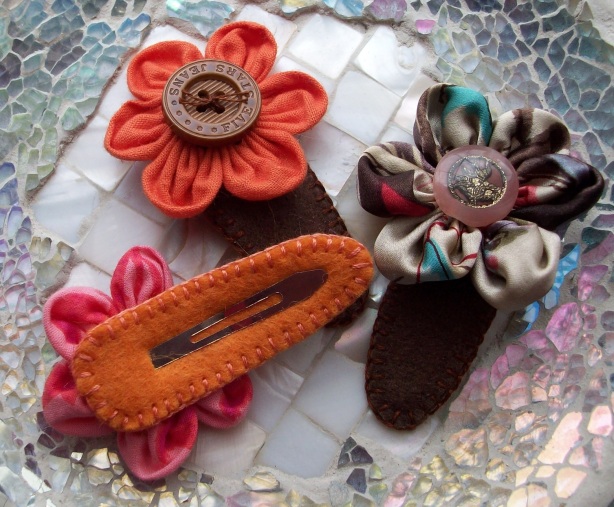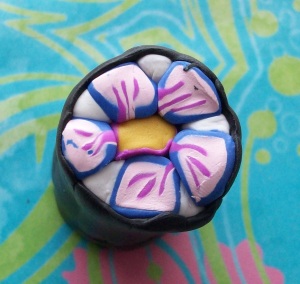Plump up a cushion and come and join me for a chat…
After a lengthy hiatus I have returned with not one, but two, back-to-back tutorials which will hopefully see you making your very own soft furnishings just like the example pictured above.
What’s that you say? You don’t think you’ll ever be able to make such a thing? Don’t be daft – It’s easy! Let me show you how…
Here’s the deal; By following this first tutorial you’ll have created the bulk of your first ever piece of Dresden Plate patchwork. You’ll also no doubt have had to stop a few times along the way to do a little happy dance as you see how incredibly easy it really is. You might even have to pause to post pictures on Instagram, Facebook and beyond. Either way, I guarantee that you will be bursting to share what you’ve made with your friends – Just you wait and see!
First of all, you’ll need to gather together your crafting arsenal – It’s a lengthy list to tick off…
You will need roughly half a metre of a plain, hardwearing fabric (This is more important in our next session so don’t worry if you haven’t got anything to hand straight away).
You’ll also need plenty of fabric scraps that measure at least 5 inches long by about 3 inches wide; You’re going to need twenty separate pieces to make up the circular part of your patchwork, plus one extra piece that we’ll be using to make the centre. For my design I chose ten different fabric prints but ultimately it’s up to you how many you use; One, two, twenty… you decide.
Coordinating thread, a sewing machine, pins, scissors etc
A dresden plate ruler, rotary cutter and mat. Scissors and a card template work just as well but it’ll take three times as long to get everything ready.
Don’t forget to find something blunt to help turn any corners inside out – It’s tempting to use scissors but really annoying when you push too hard and burst through the fabric!
Right! I think that’s about it; Let’s make a start.
First things first you need to cut out twenty separate pieces of fabric that are all five inches in length. You’ll see that they resemble a wedge shape with a wide top that tapers to a much narrower bottom; From now on we’ll refer to these as ‘blades’. Once you have all your blades, start laying them out in a circle and have a little play around at mixing your different fabric designs and colours until you’re happy with the way they look.

Don’t be too worried about changing your mind at this stage – Nothing is set in stone until we start stitching…
Gather your blades together into a neat little pile and now we’re going to start sewing…
Take your first blade and fold the widest end in half with the printed design on the inside.
Sew down the folded edge but don’t break your thread – Let the machine sew a few blank stitches and then sew your next blade…
Keep on sewing until you’re left with a little ‘blade bunting’ – That way everything’s kept in order ready for the next stage.
Use your scissors to remove the first blade. By stitching down the wide end we’ve effectively created a corner which we’ll neaten up by first snipping off any excess fabric and then turn to reveal the point…
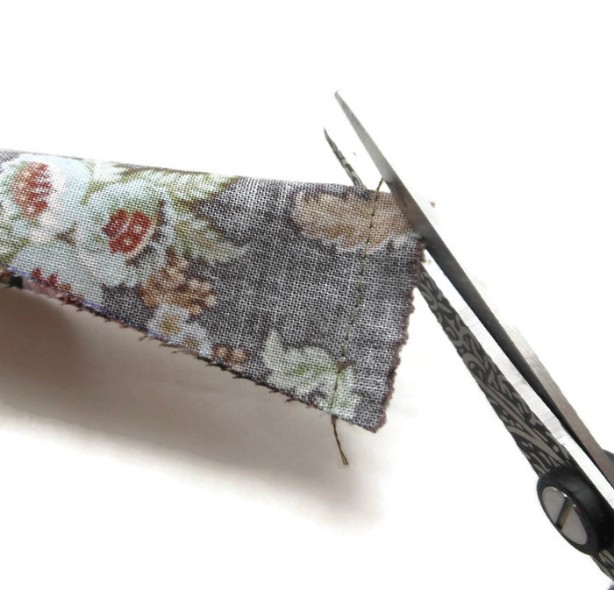
Snip any excess fabric away which could create bulk in the corner – Don’t go too close to your stitching!
Still with me? By now you should have twenty stitched and pressed blades arranged in some kind of order that works well for you – If you still need to play around then now’s the time to do it; In a moment we’re going to start sewing everything together so you can’t change your mind!
OK – Now it get’s really exciting.
Take your first two blades and place them so that their right sides (the printed bits) are facing each other. Match the sloping edge of each corner point and the side pieces together and stitch…

It’s important to make sure that the sloping edges of each corner and the long side of each blade match up accurately…

Keep working ‘in the round’ stitching each blade together until you run out….. then stitch the two ends together and do a little happy dance!
It’s at this point when you might find yourself breaking off every few minutes in order to admire your handiwork. Just keep joining each blade and enjoy taking a sneaky peek at how it’s all beginning to come together. Heck! Put that sewing down and have a little happy dance – You’re making something that looks awesome – Way to go, you!
Have you sewn everything together? Have you joined the end pieces together to make a circle? Aren’t you just the happiest little bunny on the block? Give yourself a pat on the back and do your first reveal to the world…

Whooo Hoo! I made a circle thingy with lots of thread sticking out all over the place…… Is it supposed to look like this?
Your final task for today is to give everything a little press with the iron. First, you’ll need to place your work face down and pull any excess threads down and into the centre… we don’t need to trim anything off – It’s all going to be hidden away in our next session…
Now press your work so that all the seams are facing in the same direction…
Time to make yourself a cup of coffee and celebrate all your hard work with a round of biscuits. Most of the fiddly stuff has been done; In the next tutorial I’ll show you how to complete your patchwork by incorporating it into a simple, but effective cushion cover design…
Until then, Happy Stitching Folks! It’s great to be back 🙂





